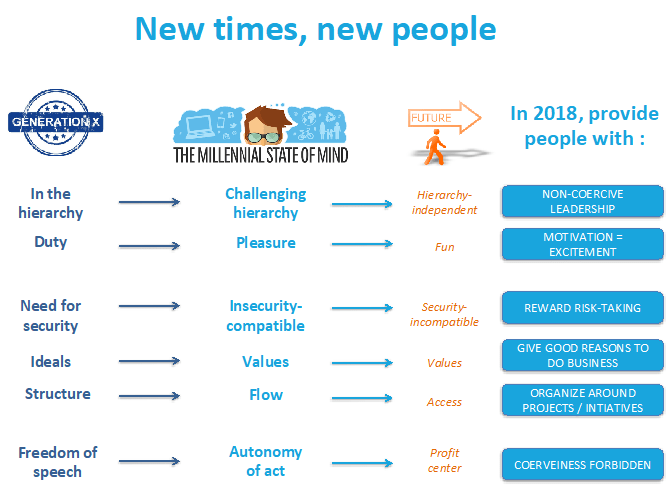HR development is revolutionizing the way we develop Purchasing people, since new generations have started to enter the job market. In the purchasing departments of multinational companies, the presence of new generations and the influence of new ways to access and share information have prompted a radical change of the leadership schemes, the reward of initiatives, and the access to information.
One of the key changes consists in starting playing with tools before properly learning them. Instead of “teaching the theory before applying it”, contemporary learning approaches prefer to create a permanent loop between the theory and practice, mutually feeding each other. In EIPM programs, projects and application cases have become the preliminary step of an immersive approach in which concepts and tools are going to be taught as an answer to operational challenges. This also implies that the purchasing professional will not be proposed a standard package of content to learn, but will seek by himself/herself the theoretical content that best responds to his/her operational challenges.

As a consequence, educational solutions have started to adapt the change in learning needs. Trainings are more aspirational, less directly linked with the core methodology and people’s performance, and more focused on opportunities to exchange with people from other fields – believing that the big picture sometimes teaches more than the tools themselves. This new taste for generic and peripheral contents revived an interest for cross-functional trainings: more and more Procurement trainings mix buyers with salesmen, Executives, sometimes even suppliers – pushing them to exchange more and define collectively the value add of buyers. It has also individualised learning paths, helped by the increased modularity of on-line training offers: educational solutions are always more blends of e-modules, webinars, face-to-face sessions, and coaching.

Such changes respond to the evolution of the profiles targeted. ‘Millennial’ buyers are diluting the Generation X ones, and have progressively imposed their mental schemes and preferences. They prefer the flow of information to its structure, and the autonomy of act to the freedom of speech. They have fewer ideals but more values, and they are more compliant with insecurity, which pushes them to run more risks and undertake ambitious initiatives. The learning environment must be less hierarchical, educational solutions more modular, learning paths more individualised.
Needless to say, this is probably just the start of a change in how we teach buyers, which goes with the surge of the importance of the Purchasing function, more and more in command of supplier innovation and becoming more strategic than ever.
Share this:
- Click to print (Opens in new window)
- Click to share on Facebook (Opens in new window)
- Click to share on LinkedIn (Opens in new window)
- Click to share on Twitter (Opens in new window)
- Click to share on Google+ (Opens in new window)
- Click to share on Pinterest (Opens in new window)
- Click to share on Skype (Opens in new window)
- Click to share on WhatsApp (Opens in new window)





